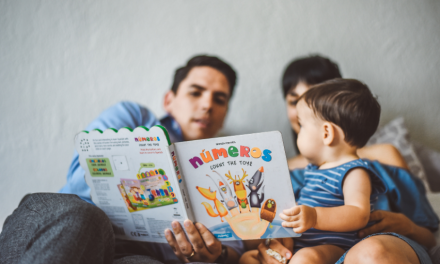Establish a Rhythm for the Morning
The power of regularity! Clear expectations and a predictable sequence of events work in your favor because the young brain is forming coping with setbacks and building self-regulation skills. Dr. Maria Montessori noted that children before the age of 6 are in a sensitive period of order. This refers not only to the organized environment, but also to the predictability needs of the routines they follow.
Research points out that establishing daily habits has a positive impact on a child’s parenting ability, concentration skills, and healthy social-emotional development. When children are able to adapt to predictable daily rhythms, their brains are better equipped to cope with stress, challenges, and transitions from one part of their daily life to another. This ability is essential to support their ongoing efforts to develop self-regulation skills and self-awareness, and gradually become more cooperative.

There are a few ways to set yourself up for success and have a great morning:
Be prepared
When you started reading this, you wanted advice on a smoother process to get your child ready to start the day, but are you ready to get out the door? Make sure your core needs (whatever you think) are met as part of the morning rhythm so that you can guide your child through their needs. Maybe it’s drinking coffee alone for 5 minutes, doing your skincare routine without a child crawling on top of you, or taking a few minutes to listen to NPR before starting your day. It doesn’t always work, but getting up before your child to make room for core self-care needs or rituals can be key to staying calm and connected as you help your child with their morning routine.
Follow a consistent sequence of events
Maintain a consistent wake-up and exit schedule. For example, we get up first, then get dressed, read a book, and go to the kitchen for breakfast. Then, we pack the lunch bags together before heading out. You don’t need to complete each project in a specific minute, but rather maintain a predictable routine for your child.
Consider adding a visual layout to your pacing to familiarize children with it, a tool that can help them understand any changes to their daily activities concretely so that you need to make adjustments in the future. For example, print out pictures of your home’s daily activity spaces (toothbrush by the sink, seat at the table, wardrobe, chair at the doorway) and arrange them in order where your child can see them.
Give your child autonomy in their daily self-care routine
It may seem counterintuitive, but creating opportunities for your child to participate independently in the different steps of the daily routine allows you to engage purposefully and make the morning go smoothly.
This may seem counterintuitive and take a few minutes, but providing more independence in those times can go a long way in collaborating when:
- Brushing
- Combs
- Change diapers or go to the toilet
- Get dressed
- Decide what to eat for breakfast
Keep your morning essentials visible and within reach
Parents often ask, “Can they learn to put on shoes?” Or, “Do I have to remember their bag all the time?” “They’ll help them put on their shoes and remember their bags – but the environment has to be ready for them.
- For backpacks and lunch boxes, designate a space in the refrigerator or kitchen low drawer.
- For jackets and hats, install a hook or hanger so that the kids can reach it themselves.
- Keep your shoes and socks in a basket at the door of your room or near the entrance.

Give the kids a choice
When part of the routine comes into battle, ask yourself, “How can I give my child more control.” Here are some of the preferred solutions for daily morning battles:
If you’re struggling with what to wear: choose the kids’ outfits together the night before, or limit the available options to 2-3 weather-appropriate options for them to decide.
If you’re arguing about what to eat: make a lunch or breakfast menu for the week ahead of time based on their opinions.
If you need help transitioning to breakfast: consider how they can join the table independently. For example, can they climb into a chair? Or have two cups to drink? Can you invite them to choose the fruit on the oatmeal that morning?
If they don’t want to get in the car: they have to leave, but the choice can be how they get there. Is it to their favorite song? Race to see who arrives first? Hand in hand or hugged? Or do they want to choose whether you take a short or long distance to school? You can still work with them as collaborators to achieve your goals along the way.
Be prepared to slow down and avoid interruptions
Applying all of the above strategies can take more time and preparation. But now is the time to invest in building your child’s confidence, belonging, and sense of purpose in their daily lives. Along the way, you’ll gain key developmental skills such as executive function, motor skills, attention, and self-regulation.
Expect imperfect but powerful results. Costumes may not match, and after brushing our teeth, we may need to take turns making sure they are cleaned properly. Make sure your child’s efforts are given the attention they deserve, and this is definitely the best your child can do today. As you continue to make room for practice, their skills will be fine-tuned and their confidence will grow, yours
Slow down and allow time for processing. For example, it can take 8-10 seconds for a young brain to process a simple request like “it’s time to put on your shoes.” Before you lose your cool or decide to take over, set aside time for your brain to think about what to do next.
There is a built-in time buffer. This is true for both your child and you! It gives your child more leeway to overcome challenges and can free you from time pressures that can leave you feeling rushed and emotionally out of control when you go out.








